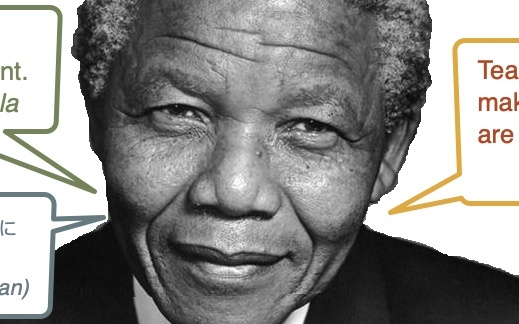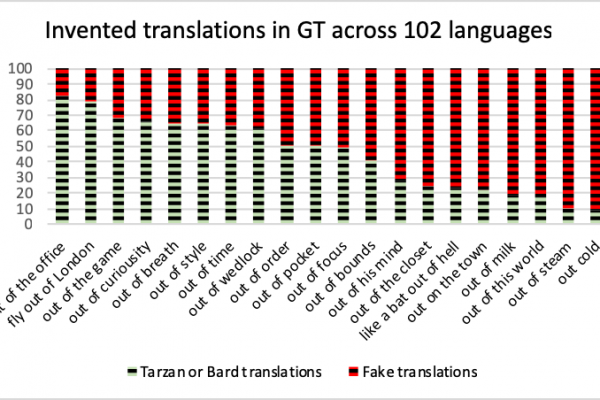This web-book tells the story of Google Translate, the world’s most-used service to convert words among languages. Google claims to serve 108 languages, but nobody has ever before investigated what actually happens when you put in text for translation. Sometimes your results will be spot-on, sometimes they’re spotty at best, and sometimes they’re as intelligible as a red-spotted toad. What are those times, and why such variable results? Are some languages better than others? Do some things translate better than others? Can Google Translate be trusted?
The pages that follow dive into the question of how well Google Translate accomplishes the job it says it does. This started out as a technical research study, with measurements designed with academic rigor to compare translations from English to the other 107 Google languages. Along the way, though, it became evident that there was a much bigger story than whether Google found the right words in one language or another. The story involved human psychology, media gullibility, and corporate mendacity – a rich mixture of hope and hubris, built on a platform of data and deceit.
What originated as a project for an academic journal, then, has transformed into a book for the wider public. This is a story for anyone who wonders what is going on when they use Google Translate. It is written using the sorts of English expressions that regular people use every day and that a translation service should be able to translate, not the highfalutin language meant for professors to impress each other with their genius. The study should stand up to academic standards, and the peer Commentary section is an open invitation for experts working on language and technology to discuss topics surrounding the research and its interpretation. As you read this book, you will find humor and videos and digressions that you would not find in a computer science journal, with the intent that the study’s findings will be as enjoyable as they are enlightening to the most number of people.
This is not your standard study, and it is not your standard website (and it is not optimized for mobile phones – it looks better on a larger screen). There are no pop-up alerts, no ads, and no craven attempts to get your data – though if you find what you learn valuable, any amount of your appreciation is appreciated. . Please do comment in the discussion threads if you have something to say, especially if you have examples from languages that are not deeply treated in the research. Please also share with all your friends and colleagues who might use Google Translate, and therefore might like to know what they are getting when they do. And please enjoy.
How to cite: Martin Benjamin 2019, Teach You Backwards: An In-Depth Study of Google Translate for 108 Languages, Kamusi Project International, https://teachyoubackwards.com. You may link to any section of the book without asking permission, using the shortlinks provided as footnotes. You may also link to or embed photos, charts, and tables, using the named anchors you can find via “view source”.







